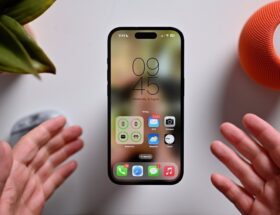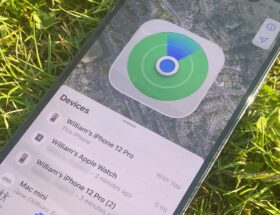An iPhone 14 Pro with Apple's Bongo design has been spotted recently.
 0 Facebook x.com Reddit
0 Facebook x.com Reddit
A newly discovered iPhone 14 Pro prototype is one of the earliest known incarnations of Apple's cancelled haptic button project.
Back in July 2024, AppleInsider published exclusive images of an iPhone 15 Pro Max prototype featuring Apple's long-known haptic buttons. Developed under the codename Project Bongo, the haptic buttons were supposed to debut in 2023, but never made it into production.
Following our initial report, the first to show Apple’s Project Bongo on real hardware, a second prototype with the same button design has surfaced online. This newly discovered prototype offers a unique look at the humble beginnings of the company’s haptic button project.
What was Project Bongo and what did it look like?
With the iPhone 15 Pro, Apple originally wanted to introduce haptic volume and power buttons. The company’s plans to build haptic buttons date back to at least 2021, two years before the iPhone 15 Pro is scheduled to launch.
The most notable change to Project Bongo was the unified volume button on the left side of the iPhone. The Bongo module featured unique hardware such as an electromagnetic propulsion motor known as the Bongo Haptic Engine, which provided haptic feedback.
The iPhone prototype shared by AppleDemo on YouTube is codenamed Ranger, indicating that the device is the iPhone 14 Pro. It can be seen on the side of the device, just below the unified volume button. This is where most iPhone prototypes have an engraving containing key information about the device.
During development, the iPhone 14 Pro was known by the codename Ranger. The iPhone 15 Pro was called Vantage, and the iPhone 16 Pro was known as Diablo.
More recent codenames for Apple’s iPhones are references to high-performance sports cars, such as the Lamborghini Diablo and the Aston Martin V12 Vantage.
What do we know about the iPhone 14 Pro prototype?
The engraving on the side of the newly unveiled iPhone 14 Pro also contains the word “DROP,” which reveals the development stage and overall purpose of the device — drop testing. Devices labeled Drop1 and Drop2 often have placeholder parts, as is the case with the iPhone 14 Pro in question.
The codename Ranger indicates that this is an iPhone 14 Pro. Image credit: AppleDemoYT.
A well-known characteristic of devices that undergo drop testing are placeholder logos. The iPhone 14 Pro prototype with the integrated volume button has the so-called Vessica Piscis logo, which was also used for the iPhone 15 Pro and iPhone 16 Pro prototypes that underwent drop testing. The prototypes that underwent drop testing use this logo, despite the fact that they are instantly recognizable as Apple products.
Drop test prototypes often have a placeholder logo. Image credit: AppleDemoYT.
Drop test devices typically do not have a functioning rear camera assembly, instead featuring parts made from machined metal, as is the case with this iPhone 14 Pro. The display connector is also missing, as are various other components. This is because the device was never intended to have fully functional hardware.
Instead, these devices are dropped from a predetermined height to test the strength of the key structural components. The testing is recorded in slow motion, and the resulting cosmetic damage is analyzed in detail using DSLR cameras.
Drop test prototypes feature placeholder parts made from metal. Image credit: AppleDemoYT.
A newly discovered iPhone 14 Pro prototype has all the hallmarks of a real Apple prototype, right down to the smallest details. It's quite unusual to see devices like this in the hands of collectors. The device in question has some differences compared to the device AppleInsider announced in July 2024.
Subscribe to AppleInsider on YouTubeSubscribe to AppleInsider on YouTube
The EVT-stage prototype we previewed had a unified volume button with a notch in the middle to help users differentiate between the volume up and volume down positions. The recently unveiled iPhone 14 Pro prototype instead has a flat-surface button.
The rough look of the button on the iPhone 14 Pro can again be attributed to its purpose as a drop test device. It was never meant to look pretty or resemble the final product in any significant way.
The device also lacks an action button, instead featuring a traditional mute switch, which puts it in line with other prototypes AppleInsider has covered.
The iPhone 14 Pro prototype has a crude-looking unified volume button. Image credit: AppleDemoYT.
Prototypes like these provide useful insight into the creativity of Apple’s engineering and design teams. They could also be very different from their mass-production counterparts, as neither the iPhone 14 Pro nor the iPhone 15 Pro will ultimately feature a unified volume button.
In one of our previous reports, we detailed many of the scrapped features found in early iPhone 15 prototypes, including a capacitive action button and a different back panel to the standard iPhone 16.
Another prototype showed an experimental user interface for Apple’s Mail categorization feature, powered by Apple Intelligence. The prototype was created about five years before Apple even announced the feature at WWDC 2024.
Follow AppleInsider on Google News










